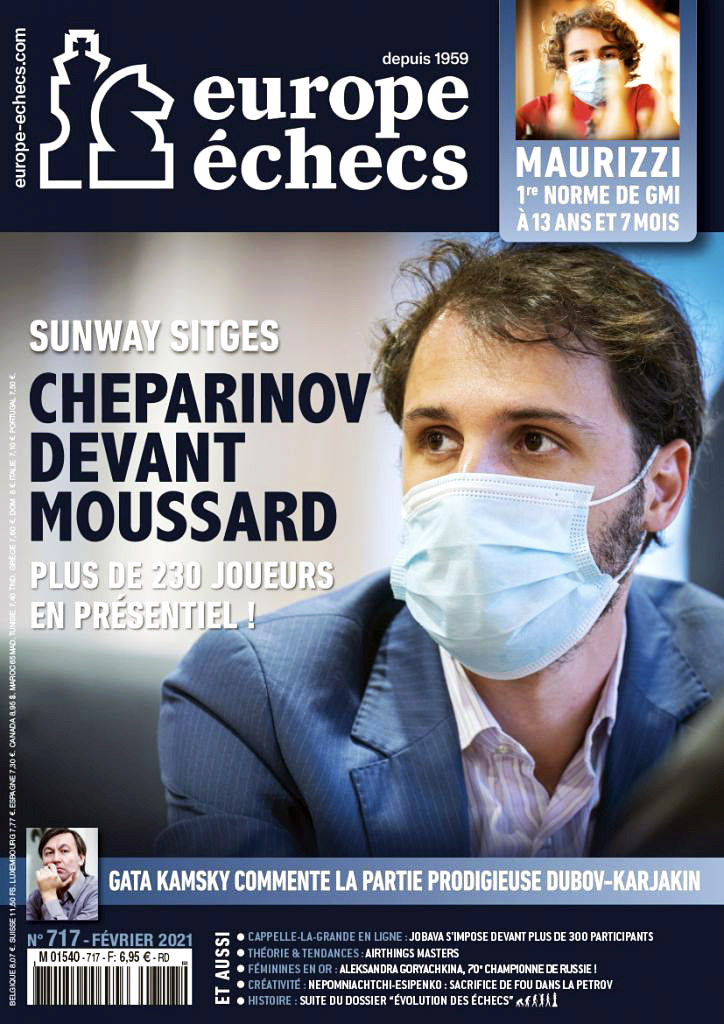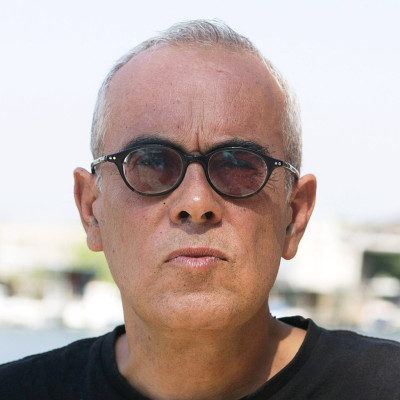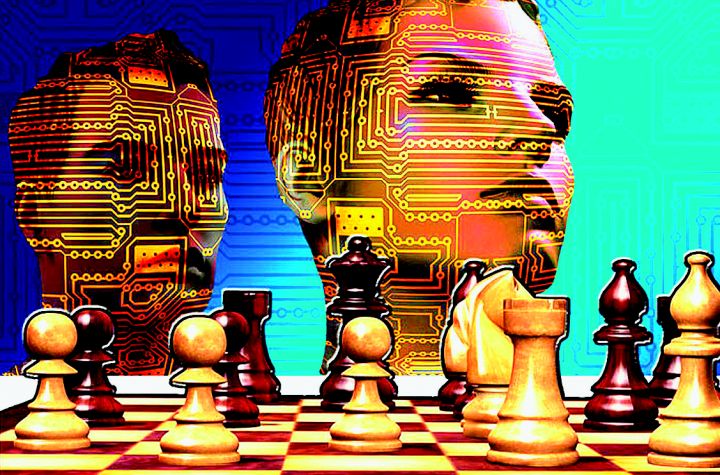 "Computers can make the world a better place"
"Computers can make the world a better place"
Frederic Friedel was a science journalist when he co-founded ChessBase in 1987 in Hamburg. It's still the headquarters of the German firm, which has become the world leader in chess software. His partner, the programmer Matthias Wüllenweber, created the architecture of the first professional chess database in history: ChessBase 1.0. The iconic Fritz was born in 1991, developed under DOS by Frans Morsch and brought to light under Windows by Mathias Feist.
The "guru" of ChessBase is now 75 years old. He believes that Artificial Intelligence can be the key to the future, so that humans can live better on earth. He is as optimistic and enthusiastic as ever. He expresses his hopes, but also his fears and doubts. How will we coexist with computers of a new type when they have become as intelligent as we are, and even more so?
 The following article was based on a telephone discussion conducted in December 2020 by Europe-Échecs editor Jean-Michel Pechine.
The following article was based on a telephone discussion conducted in December 2020 by Europe-Échecs editor Jean-Michel Pechine.
The article appeared in the February 2021 issue of Europe Échecs, which can be bought here.
Jean-Michel was advised and guided by Henri Assoignon, from the administrative desk of Europe Echecs.

This "general public" game program started modestly, but its computing power developed exponentially. In 2002, Deep Fritz drew a classic match against Kramnik (4-4), as did X3D Fritz against Kasparov in 2003 (2-2). In 2006, Kramnik lost 4-2 to Deep Fritz, and the taste for man-machine matches was over. The German firm continued to improve its flagship programme. Version 15 was developed by Vasik Rajlich, the creator of Rybka. Last November, it launched version 16 of ChessBase. That ushered in a new era by integrating specific revolutionary applications. Artificial Intelligence is in vogue. Frederic Friedel's new child prodigy, Fat Fritz, was launched a year earlier. It is a neural network program. Unlike its predecessors, it was not taught to play chess by human masters. It plays millions of games against itself and draws its own conclusions from them, becoming stronger and stronger. In one year, the prototype has gone from an absolute beginner's level to an Elo rating flirting with 3600 points!
The Steve Jobs of chess
This is the magic of technology and Fredric Friedel is delighted. He views his programs like his own children. How could he have imagined, 34 years ago, that his company would revolutionize the world of chess like no other player or theorist had done before? His meeting with Garry Kasparov in 1985 was decisive. The world champion became involved in the process of creating ChessBase. Kasparov's brute force helped to finish the job. It was the time of the computer pioneers, from Atari to Windows. Like Steve Jobs, co-founder of Apple, Frederic Friedel's desire was to democratise access to high technology. This was also Kasparov's wish, he stresses in his interview. ChessBase offered everyone the opportunity to acquire state-of-the-art tools to prepare themselves, at an affordable cost. Chess became globalised.
From Fritz to Fat Fritz
This "general public" game program started modestly, but its computing power developed exponentially. In 2002, Deep Fritz drew a classic match against Kramnik (4-4), as did X3D Fritz against Kasparov in 2003 (2-2). In 2006, Kramnik lost 4-2 to Deep Fritz, and the taste for man-machine matches was over. The German firm continued to improve its flagship programme. Version 15 was developed by Vasik Rajlich, the creator of Rybka. Last November, it launched version 16 of ChessBase. That ushered in a new era by integrating specific revolutionary applications. Artificial Intelligence is in vogue. Frederic Friedel's new child prodigy, Fat Fritz, was launched a year earlier. It is a neural network program. Unlike its predecessors, it was not taught to play chess by human masters. It plays millions of games against itself and draws its own conclusions from them, becoming stronger and stronger. In one year, the prototype has gone from an absolute beginner's level to an Elo rating flirting with 3600 points!
 Fat Fritz
Fat Fritz
“With this program we carried out an experiment in Artificial Intelligence" explains Frederic Friedel. “We used the same strategy as Google DeepMind with AlphaZero, which was developed by my old friend Demis Hassabis. We created our own program, which we called Fat Fritz. How did we do it? In December 2017, a DeepMind Artificial Intelligence project manager, Thore Gräpel, came to see us in Hamburg. He revealed all his secrets to us, and we used the same basic techniques. After that, for a year, I had this very powerful computer right here under my desk. It was playing against itself, all the time, nearly 90,000 games a day – in total tens of millions of games. A similar computer in Brazil was retrieving the games and learning from them. This project was led by my friend and colleague Albert Silver.
A super-powered entity
The only thing we did at the beginning was to teach it the basic rules. How the queen, a rook, a knight move, what is allowed or not allowed (like castling conditions), and the purpose of the game. After its first hundreds of games it played like an absolute idiot. After a few thousand, it started to play at the level of a beginner, and after a few million, Fat Fritz became really strong. It learned what it takes to win. It knew how to evaluate a position. It knew the value of the pieces, the value of a bishop, a knight. It understood that a queen is generally worth eight or nine pawns, depending on the situation. It knew which strategy to adopt. It went on to become the strongest entity that had ever played chess, stronger than Fritz or Komodo.
Infinite applications
So Fat Fritz learned all on its own. Chess programmers are among the first human beings to directly experience the power of this new programming technique. The applications are infinite and will develop in all spheres of life. They will touch all fields, science, technology, writing and even the legal world. We can show billions of legal decisions to AI and, again, it learns from each of them. In the end, it may render more competent and fairer verdicts than human judges.
Beyond understanding
There has been nothing comparable to this revolution since the dawn of humanity. It is as if an alien lifeform had landed on our planet, coming from a distant galaxy. Suddenly we have a machine that may not think like a human being, but it acts in a similar. It may not be able to tell you how it arrives at its decisions. Take the example of chess: if you ask the AI program why one move is better than another, it will tell you: "Because statistically it is 1% better than the next best move." It cannot explain its "reasoning" in human terms. However, this mysterious way of thinking has already made it considerably stronger than the best player in the world.
Elo 3600
Fat Fritz's current classification is around 3500 to 3600 Elo. Nobody can beat it, but chess players can use it to try ideas and see how it reacts. You test a novelty or a specific move in a known position and see how it responds. You think, "Oh, that's interesting, it takes the pawn or, on the contrary, why didn't it take it?" I'll explain it to you differently. Fat Fritz can leave a piece hanging. A GM who is analysing this position may say that the program is playing a really rotten move, and will try to demonstrate why. Five moves later, the GM will say: okay, maybe it wasn't a losing move, but whatever it was, it wasn't good. And five moves later, he'll see that it's a winner, that it was a brilliant move!
"Humanised" computer
In the openings, Fat Fritz likes to play 1.e4 and 1.d4, which remain the best moves, according to it. The program will not play 1.h4, for example. Now, we have no idea about its strategy in the openings. It has played millions of games and prefers certain starting patterns. Then we started to show it the games of the best players in history, contained in MegaDatabase. With them, it learned the different styles of play of the humans: aggressive, tactical, positional, strategic, etc. It changed its style in a way that we find very interesting. But it continues playing against itself, to discover things that no human had discovered before. It learns to evaluate positions differently. It also has to discover elementary things, for example that three queens win against zero queens, a situation that never happens in games between humans.
Part two of the interview to follow soon...


















 "Computers can make the world a better place"
"Computers can make the world a better place" The following article was based on a telephone discussion conducted in December 2020 by Europe-Échecs editor Jean-Michel Pechine.
The following article was based on a telephone discussion conducted in December 2020 by Europe-Échecs editor Jean-Michel Pechine. 
 Fat Fritz
Fat Fritz




